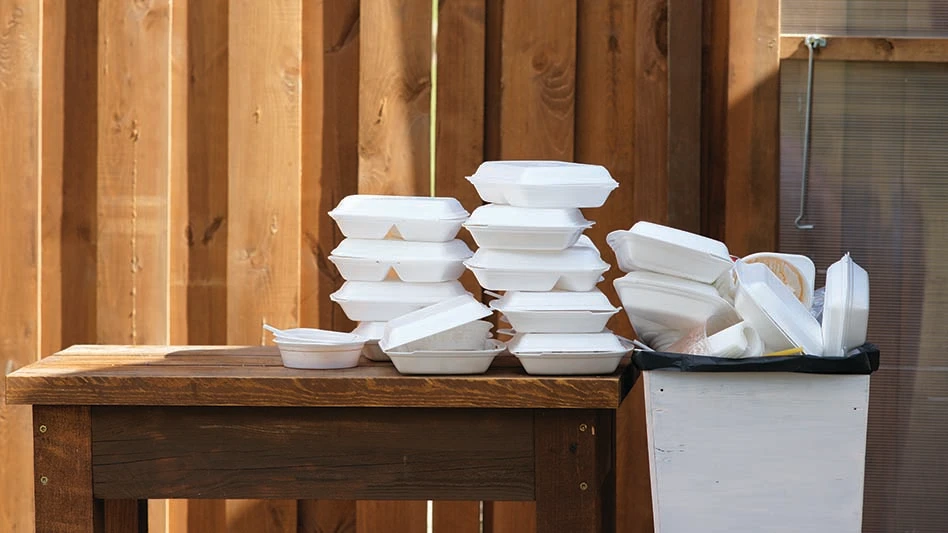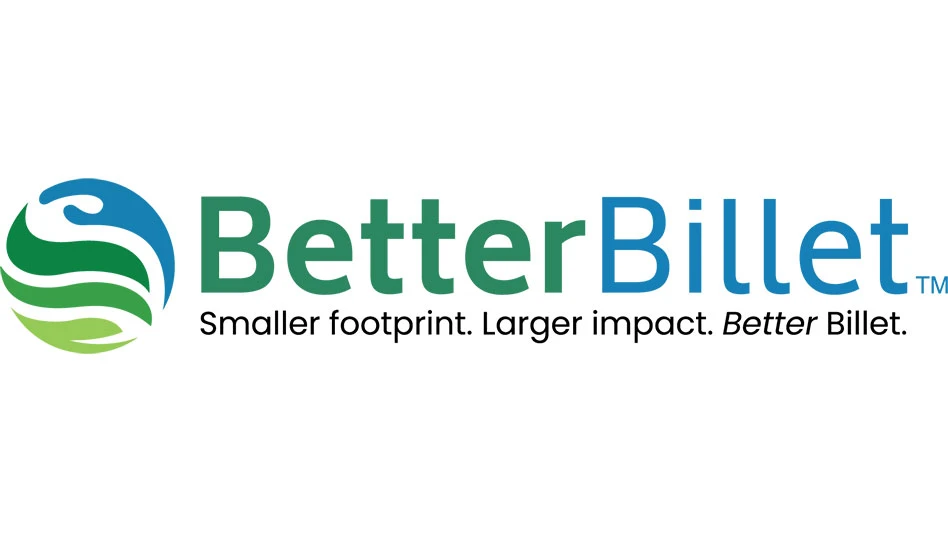Manufacturers and recyclers have been aware for some time that skyrocketing metals prices are creating an unhappy side effect—the theft of almost anything metal that is unsecured and in plain sight.
Scrap yards are facing an increasing number of ordinances requiring them to play the part of detective and security screener. Many of these new security anti-theft measures also put manufacturers and their employees in the position of entrusting their personal information—such as a photocopy of a driver’s license—in the hands of scrap yard scale house operators.
The situation has created tension on several fronts as scrap generators and recyclers must carefully guard their own metal while taking an increasingly complex series of measures to ensure that they don’t become unwitting accomplices in the crimes of others.
As 2007 begins, this mixed blessing of higher metals prices and worrisome side effects looks likely to continue.
Along with steel, stainless steel and copper pricing that remains strong, aluminum pricing is also hitting historic highs. As long as the global economy continues to have a formidable growth engine in China during 2007, metals pricing is likely to remain lofty.
ALUMINUM OVERVIEW
The well publicized slumps in the North American housing and auto industries are expected to be a drag on the aluminum industry in 2007. The construction and transportation sectors had posted fairly robust figures throughout the past several years, according to Davenport & Co., a Richmond, Va.-based commodity research firm.
The packaging industry, one of the top three end markets for aluminum along with construction and transportation, is expected to show the most promise, according to Davenport. However, even this sector is forecast to show a modest decline in 2007.
So, with this bleak economic information, why is the overall mood for secondary and primary aluminum moderately bullish?
The offshore market continues to propel the overall market for aluminum. While China continues to be the primary driver, there is strength throughout the world, according to a host of statistics. Excluding China, Asia is poised for solid growth during the next several years. Europe also is expected to post modest improvements in shipments and in demand.
At the same time, new capacity via greenfield operations or restarts of previously idled facilities should keep material flowing at a decent clip.
While still early in the year, some indicators seem to point to a moderating market of decent strength.
Unlike the wildly volatile copper market or the stratospheric rise of nickel, aluminum scrap markets have shown promising signs, but there are also potential concerns.
ECONOMIC MARKER
According to recent figures from the Aluminum Association, based in Washington, the aluminum extrusions market has been the hardest hit, with some orders declining by as much as 30 percent. The negative short-term assessment of the U.S. housing market has fueled this slide.
Although housing has been on a downward slide, some market observers foresee a mid-term strengthening in the housing market.
This assessment appears to be debatable, however. While some economists feel the residential housing market is close to stabilizing, more bearish onlookers feel that housing will remain sluggish throughout 2007 and into next year.
As for other observers, some say the aluminum market could move from a deficit situation into balance this year, which could indicate a more moderate market in 2007.
Davenport expects a decline in total U.S. shipments of aluminum, with the transportation sector expected to post a 3.1 percent decline to 8.3 billion pounds this year.
Nick Adams, statistics and economics director for the Aluminum Association, says the transportation sector, aluminum’s largest end market, is basically flat.
Davenport also forecasts that aluminum shipments in the construction market will drop 4 percent as housing activity worsens, though non-residential construction should be stronger.
From U.S. scrap dealers’ perspectives, markets appear to be in good shape, despite the widely publicized decline in new housing starts and problems with the domestic auto industry.
One large handler of aluminum scrap says his company continues to get significant calls from end users looking for more material.
Several larger handlers of aluminum scrap in the Midwest say they are receiving more calls for material, which belies much of the negative economic reports. In fact, recent trends indicate that the housing industry may be stabilizing, which is a positive indicator for aluminum markets.
Davenport also forecasts a modest dip of less than 1 percent in the aluminum packaging sector.
Even more promising, several scrap dealers say, is that domestic aluminum markets are leading the rebound with steadier orders for various grades of aluminum scrap. Also, some of these consumers are looking for quick shipments, indicating that inventory levels at some plants may have declined.
FOREIGN SHORES
The outlook for Asian demand is much more bullish compared to the domestic picture. Davenport expects aluminum shipments to grow from 4 percent to 5 percent throughout the next several years. India is emerging as a key driver of aluminum demand in the region, with its demand expected to grow 10 percent per year through 2009.
Meanwhile, China continues to show increasing strength, with forecasts calling for nearly 17 percent growth this year, which will then cool off slightly to around 10 percent by 2009.
Global aluminum capacity should grow at an average of roughly 3.5 percent per year throughout the next four years, down from the 7 percent annual growth during the previous four years.
Some scrap metal handlers note that aluminum scrap prices have been flat, though there is some underlying strength during the first month of the year.
The strength is somewhat uncertain, as inventory levels are in flux. Several reports note that after the end of the year LME (London Metal Exchange) inventory levels jumped. Additionally, during the first half of January, according to some reports, a large hedge fund had placed a significant contract on aluminum. According to one report, an investor purchased aluminum contracts that made up around 90 percent of the aluminum held at LME warehouses.
The move was a bullish step and helped to firm up prices. The improvement follows a surprising show of strength at the end of 2006, when prices rebounded from earlier fairly listless levels.
The Chinese government is also changing its approach toward export taxes, which is affecting aluminum scrap markets. To keep more of its domestically produced aluminum in the country, the Chinese government recently boosted its export tax from 5 percent to 15 percent.
Jorge Vasquez, a senior market analyst with Harbor Intelligence, a Laredo, Texas-based aluminum consulting firm, has a much more bearish outlook. Vasquez expects higher inventory levels to be met with contracting end markets for aluminum.
As for the more recent run up in aluminum prices, Vasquez says they are being influenced by a significant speculative play. However, he says he feels that once that move starts to unwind, prices should decline.
UNEVEN FOOTING
A sense of general uncertainty seems to be the rule when it comes to aluminum (as well as a number of other nonferrous commodities). Several scrap metal handlers are seeing a burst of interest, especially on the domestic side. This situation has been met with some surprise, as a mixed bag of economic indicators shows that markets are not as robust as some of the activity would indicate.
A more moderate outlook is the opinion that primary aluminum markets will be in balance through this year. The decline in U.S. shipments implies a drop in primary aluminum demand of 5 percent. However, demand in China and Europe should more than balance out the decline in U.S. aluminum shipments.
Davenport has increased its projection for global aluminum production and now has it climbing by 6.5 percent this year versus its previously forecasted growth of 5.6 percent.
The increase is because of restart and new production announcements from mills throughout the world. Vasquez says 27 new smelters will reopen this year; 11 of them in China.
According to the Davenport report, about 2.67 million metric tons of new aluminum capacity will come on line globally, followed by a jump to 6.3 million metric tons next year.
2007 should be a transition year for the aluminum market as it moves toward balance, according to Davenport, followed by a surplus in 2008 and 2009, based on global consumption rising by 5.5 percent this year and next year and 4.4 percent in 2009.
Meanwhile, Davenport reports, "Our forecast implies that the very tight market of ’06 will get slightly tighter in 2007, with days’ supply decreasing from 41 in 2006 to 39 in 2007. With surpluses projected in 2008 and 2009, we calculate day supply increasing to 43 in 2009. This marks a gradual easing off the very tight conditions that exist today."
The author is senior and Internet editor of the Recycling Today Media Group and can be reached at dsandoval@gie.net.
Get curated news on YOUR industry.
Enter your email to receive our newsletters.

Explore the June 2007 Issue
Check out more from this issue and find your next story to read.
Latest from Recycling Today
- Plastics Recycling Conference 2025: Working toward their targets
- SWACO rolls out new commercial recycling and food waste programming
- Updated: Matalco to close Canton, Ohio, plant
- Metso launches electric Anode Weighing and Casting Machine
- Circular by Shapiro releases '5 for Five' sustainability series
- Graphic Packaging set to close Ohio CRB facility
- Ameripen voices support for Maryland EPR bill
- Maryland county expands curbside recycling to include electronics






